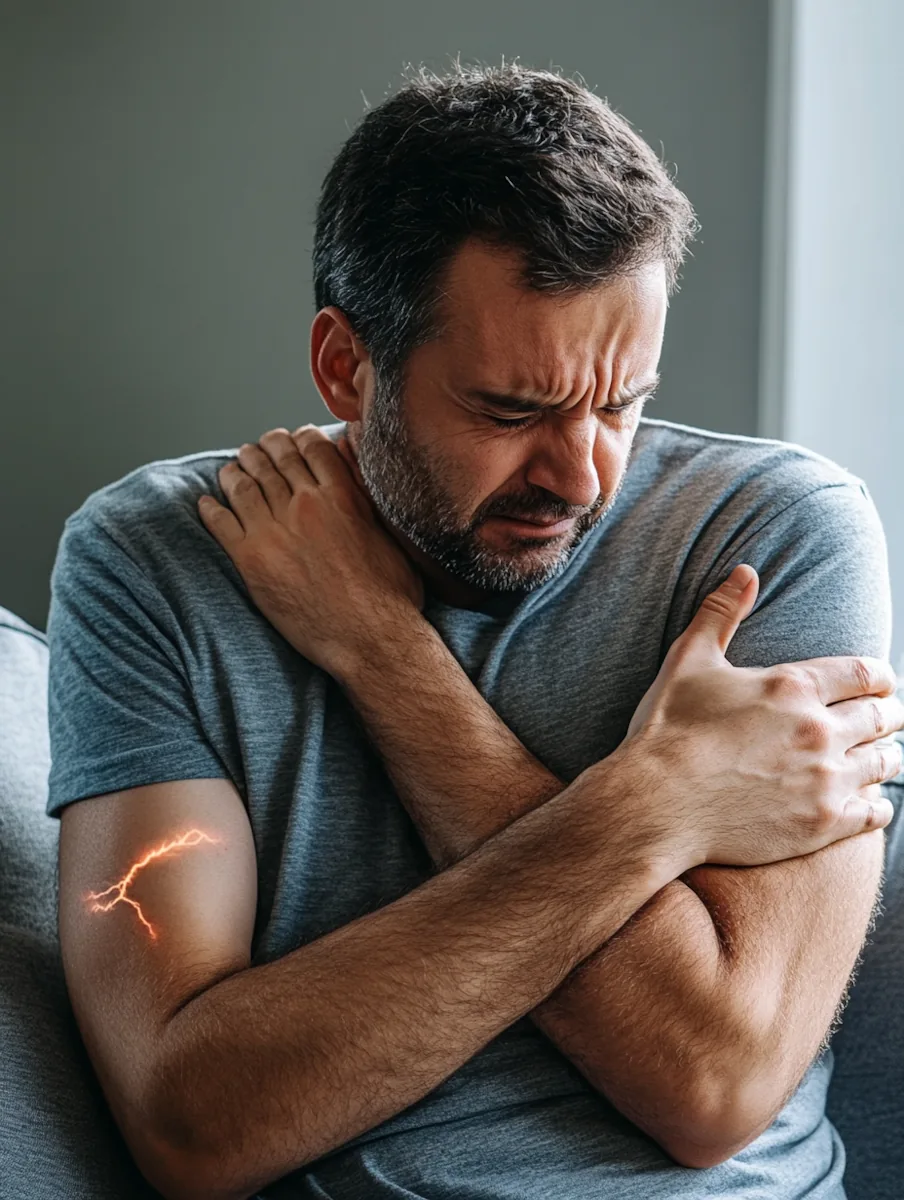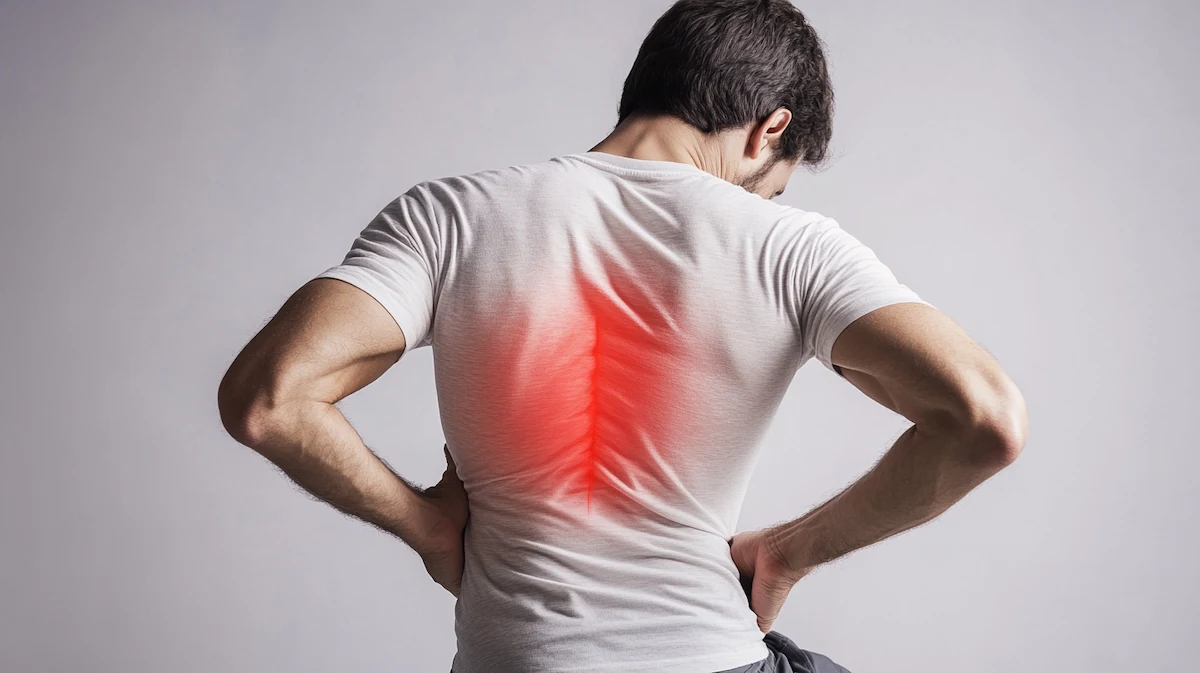Lane Change Accident Claims
Changing lanes is a routine part of driving, but when drivers fail to check their surroundings or act recklessly, the results can be devastating. Lane change accidents happen in an instant, often catching victims off guard. These collisions can lead to significant injuries, vehicle damage, and financial burdens. If another driver caused your accident, you may have the right to seek compensation for your medical bills, lost wages, and other damages.
Holding the at-fault driver accountable isn’t always easy. Many drivers refuse to admit fault, and insurance companies look for ways to minimize payouts. They may claim you were partially responsible or downplay your injuries. Having our car accident lawyers on your side can make all the difference. Our team can investigate the crash, gather the right evidence, and fight for the compensation you deserve.
At Karell Trial Attorneys, we understand how stressful life can become after a crash. The last thing you should worry about is dealing with an insurance adjuster which can be a big headache and a time-consuming process to deal with. If another driver’s unsafe lane change causes your injuries, we’re here to help.
Recent Results
$675,000
REAR END COLLISION
$225,000
TRIP AND FALL
$300,000
ATV ACCIDENT
$200,000
RIDESHARE COLLISION
$300,000
TOW TRUCK COLLISION
$500,000
GARBAGE TRUCK COLLISION
The Risks of Unsafe Lane Changes and When to Call an Atlanta Car Accident Lawyer
A routine lane change can turn dangerous in a split second when a driver fails to follow basic safety precautions. Whether on a busy highway or a city street, unsafe lane changes often lead to rear-end collisions, sideswipes, or multi-car pileups. These accidents are especially common on highways where high speeds increase the severity of injuries, including broken bones, whiplash, and traumatic brain injuries. If you’ve been injured in an unsafe lane change accident, understanding the risks and knowing when to call an attorney can help you protect your rights and seek compensation.
Common Causes of Unsafe Lane Change Accidents
Unsafe lane changes often occur when drivers act recklessly, are distracted, or fail to follow the rules of the road. Here’s a closer look at the key reasons these accidents happen:
Failing to Check Blind Spots
Blind spots are one of the leading causes of lane change accidents. Drivers should always check their mirrors and glance over their shoulder before merging into another lane. Relying solely on side mirrors can be dangerous, especially when another car, motorcycle, or cyclist is in the blind spot. Failing to check these areas often results in sideswipes or collisions that push vehicles off the road.
Not Using Turn Signals
Turn signals are a simple but essential part of safe driving. When drivers fail to signal their intentions, surrounding vehicles don’t have time to adjust or respond. A sudden, unexpected lane change without signaling can lead to rear-end collisions or force other drivers to make evasive maneuvers, causing chain-reaction crashes.
Cutting Off Other Cars
Some drivers merge too quickly without ensuring there’s enough space between vehicles. Cutting off another car forces the driver behind them to hit the brakes suddenly or swerve to avoid a collision. This aggressive driving behavior is especially dangerous on highways, where sudden braking at high speeds can cause rear-end accidents or multi-vehicle crashes.
Distracted Driving
Distractions like texting, eating, or adjusting the GPS can cause a driver to drift into another lane without realizing it. Even a momentary distraction can result in a dangerous lane change if the driver fails to notice nearby vehicles or traffic conditions. Distracted driving continues to be a leading cause of crashes in Georgia and across the country.
Driving Under the Influence
Drivers under the influence of alcohol or drugs are more likely to make poor decisions, including changing lanes without checking mirrors or judging distances properly. Impaired judgment and slower reaction times significantly increase the risk of a crash during a lane change.
When to Call an Atlanta Car Accident Lawyer
If you’ve been injured in an accident caused by an unsafe lane change, you don’t have to face the insurance companies or legal process alone. Insurance adjusters often try to blame victims or offer low settlements that don’t cover the full cost of medical bills, lost wages, or long-term pain and suffering.
An experienced Atlanta car accident lawyer can investigate the accident, collect evidence like police reports, dash cam footage, and witness statements, and build a strong case to prove the other driver’s negligence. At Karell Trial Attorneys, we fight back against unfair fault determinations and ensure you pursue maximum compensation. Contact us today for a free consultation to discuss your case and how we can help.
If another driver’s reckless lane change causes a collision, contact Karell Trial Attorneys so we can help you get the compensation you deserve. Insurance companies may try to shift blame or offer a low settlement, hoping you’ll accept without question. Our experienced attorneys can protect your rights and negotiate for the full amount you’re owed.
Common Injuries Caused by Lane Change Collisions
A lane change accident can cause serious injuries, even at lower speeds. The force of impact, the angle of the collision, and whether a vehicle was sideswiped or struck at full speed all play a role in how badly a person is hurt. Some injuries appear immediately, while others take hours or even days to show symptoms. Seeking medical attention after a crash is critical, even if you feel fine.
Whiplash and Soft Tissue Injuries
The sudden impact of a lane change collision can cause the head and neck to jerk violently. This unnatural motion can strain or tear muscles, tendons, and ligaments in the neck and upper back, leading to whiplash. People suffering from whiplash often experience stiffness and pain in the neck or shoulders, along with limited range of motion. Many also experience headaches that begin at the base of the skull and can last for days. Dizziness and fatigue are also common symptoms.
Whiplash is not always immediately noticeable. Some people feel fine right after a crash but wake up the next day with severe pain. Without proper treatment, this type of injury can cause long-term discomfort and limited mobility.
Broken Bones and Fractures
The force of impact in a lane change accident can cause broken bones, especially in the arms, wrists, ribs, and collarbones. The location of the fracture depends on how the body absorbs the impact. For example, a driver gripping the steering wheel tightly may suffer broken fingers or wrists, while a side-impact collision can break ribs or a collarbone.
Some fractures heal with immobilization, but others require surgery and rehabilitation. Compound fractures, where the bone breaks through the skin, are particularly serious and can lead to infections or complications that require extensive medical care.
Traumatic Brain Injuries (TBI) and Concussions
A blow to the head during a lane change accident can cause a concussion or a more severe traumatic brain injury (TBI). Even a minor impact can disrupt normal brain function, leading to headaches and dizziness, as well as difficulty concentrating or remembering details. Many people with a concussion also become sensitive to light and sound, and may experience nausea and vomiting.
More severe TBIs can result in permanent cognitive issues, personality changes, or even loss of motor function. Some brain injuries do not show symptoms immediately, which is why medical evaluation after an accident is so important.
Spinal Cord and Back Injuries
A lane change accident can place extreme stress on the spine, leading to herniated discs, nerve damage, or even paralysis. Those suffering from spinal injuries often feel sharp pain in the lower back or neck. They may also experience numbness or tingling in the arms or legs, as well as weakness or loss of coordination. Many people with spinal injuries struggle to sit or stand for extended periods.
More severe spinal injuries can result in partial or complete paralysis. These cases require lifelong medical care, physical therapy, and, in some situations, assistive devices to regain independence.
Internal Injuries and Organ Damage
The force of a crash can cause internal injuries that are not immediately visible. Blunt force trauma can damage organs like the liver, kidneys, or spleen, leading to internal bleeding. Symptoms of internal injuries often include abdominal pain or swelling, dizziness, fainting, or a rapid heartbeat and low blood pressure.
Internal bleeding can be life-threatening if not treated quickly. Some victims may not realize they have suffered an internal injury until hours or days later, making immediate medical attention critical.
Seeking Medical Attention After a Lane Change Collision
Even if you feel fine after a crash, it is always best to see a doctor. Some injuries, like concussions or internal bleeding, do not show symptoms right away. A medical evaluation can help identify hidden injuries before they worsen and provide documentation that supports your injury claim.
Ignoring symptoms or delaying treatment can make recovery more difficult and weaken a legal claim for compensation. If you have been injured in a lane change collision, getting medical care and legal guidance can help protect your health and financial future.
Awards & Certifications



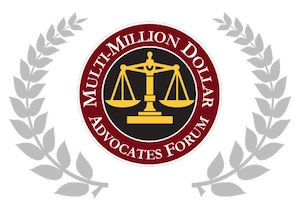

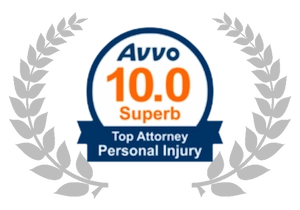
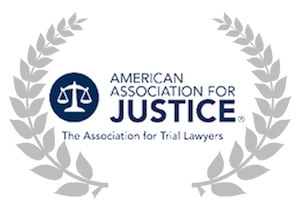


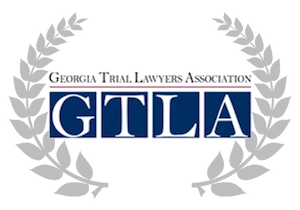
What Causes Lane Change Accidents
Lane change accidents are most often the result of driver negligence, though external factors like weather, road conditions, and vehicle malfunctions can contribute. Human error, however, is the primary cause in most cases, with behaviors like speeding, fatigue, and failure to yield playing significant roles. Recognizing the underlying cause of a lane change accident is key to establishing liability and recovering compensation for your injuries.
Speeding and Misjudging Nearby Vehicles
When drivers are speeding, they have less time to accurately judge the distance and speed of other vehicles. A driver attempting to merge too quickly may cut off another car, leaving little room to avoid a collision. Speeding drivers may also fail to account for traffic flow changes, increasing the likelihood of a sideswipe or rear-end crash.
Driver Fatigue and Unintentional Drifting
Driver fatigue is a serious safety concern that can significantly impair a driver’s ability to react to road conditions and stay in their lane. When drivers are tired, their reaction times slow down, and their focus on the road diminishes. This reduced awareness can lead to unintentional drifting into adjacent lanes, which often happens without the driver even realizing it. The consequences of fatigue-related drifting can be severe, particularly on high-speed roads like highways, where even minor lane departures can escalate into catastrophic collisions.
Impact of Fatigue on Reaction Time and Awareness
Fatigue affects a driver’s brain function, making it harder to concentrate and respond to sudden changes in traffic. Drivers who are tired may find it difficult to keep their attention on the road, causing their vehicle to gradually drift into another lane without the necessary adjustments. At high speeds, this small movement can become a serious hazard, especially if there’s another vehicle in the adjacent lane. The fatigue-induced delay in reacting to the vehicle’s position on the road increases the risk of a dangerous crash.
In some cases, drivers may even fall into “micro-sleep,” where they momentarily lose consciousness for just a few seconds. During this brief period, they could unknowingly veer into another lane, putting themselves and other drivers in immediate danger. This is why fatigued driving is considered as dangerous as drunk driving in some studies, as the impairments to reaction time and awareness can be similar.
Drifting at High Speeds
Highways and other fast-paced roads present an even greater danger when it comes to driver fatigue. Minor drifting, which may seem harmless in low-speed environments, becomes much more dangerous at higher speeds. At highway speeds, vehicles cover a much greater distance in a short time. This means that even a slight veer into another lane can lead to a high-speed collision if the driver doesn’t correct their path immediately. In these cases, a fatigued driver may not have the ability to make a quick adjustment before they collide with another vehicle.
Moreover, on highways, other drivers may not expect or have enough time to react to a vehicle suddenly entering their lane. This can lead to a chain reaction, where one driver’s unintentional drift triggers a series of accidents involving multiple vehicles.
Common Occurrences of Fatigue-Related Lane Change Accidents
Fatigue-related lane change accidents are more likely to occur during late-night or early-morning hours, particularly when drivers have been on the road for an extended period. Long-distance drivers, delivery truck operators, and anyone driving for several hours without taking a break are at an increased risk. Drivers who push themselves to keep going despite being tired often underestimate the dangers of their condition, believing they can keep driving safely. However, fatigue can build up quickly, causing them to become less aware of their surroundings, leading to accidents that could have been easily avoided with rest.
Another common scenario is during long road trips or when people are commuting after a long day at work. Sleep deprivation, which can result from driving during the night or after a poor night’s sleep, further amplifies the likelihood of drifting and the associated risks. Drivers may not recognize the signs of fatigue until it’s too late, putting both themselves and others in harm’s way.
The Consequences of Fatigue-Related Lane Change Accidents
Fatigue-related lane change accidents can result in serious injuries or even fatalities. The loss of control caused by drifting into another lane is particularly dangerous when other drivers are unable to react quickly enough to avoid the fatigued driver’s vehicle. In addition to the physical injuries that result from these accidents, there can also be significant emotional, financial, and legal consequences. Victims of such accidents may experience long recovery periods, medical bills, and lost wages. Those who caused the accident due to fatigue may face legal ramifications, especially if their driving behavior is proven to be negligent.
Failure to Yield
Ignoring right-of-way rules is a common cause of lane change accidents. Drivers who merge without ensuring it’s safe or fail to yield to vehicles already in the lane create sudden and dangerous situations. For example, merging onto a highway without checking for oncoming traffic can force other drivers to swerve or brake suddenly, leading to crashes.
Aggressive Driving and Reckless Behavior
Aggressive driving is a major contributor to lane change accidents. When a driver becomes overly focused on speed and the desire to reach their destination quickly, they often disregard the safety of others on the road. This reckless behavior can be seen in many forms, all of which increase the risk of causing an accident. Aggressive drivers may weave between lanes without signaling, cut off other vehicles, tailgate, or even intentionally block other drivers to prevent them from passing. These actions not only put the aggressive driver at risk but also endanger everyone else on the road.
Weaving Between Lanes and Cutting Off Other Vehicles
One of the most dangerous forms of aggressive driving is weaving between lanes without signaling. This behavior forces other drivers to react quickly to avoid a collision. The aggressive driver might change lanes rapidly, often without checking blind spots or giving other vehicles enough time to react. The unpredictability of such actions creates a hazardous environment for everyone involved.
Cutting off other drivers is another reckless move often seen in aggressive drivers. This occurs when a driver changes lanes abruptly, forcing another vehicle to slam on their brakes or take evasive action to avoid a crash. In these situations, the driver being cut off has little time to adjust, which significantly increases the likelihood of a collision.
Tailgating and Its Dangers
Tailgating, or following too closely behind another vehicle, is a clear sign of aggressive driving. When drivers follow too closely, they decrease the amount of time they have to react in an emergency. This puts both the tailgating driver and the car in front at high risk of a rear-end collision if the lead vehicle has to stop suddenly. Tailgating also creates unnecessary pressure on the driver in front, who may feel forced to change lanes or drive erratically to avoid being tailgated.
When a driver tailgates in heavy traffic or in situations where it is difficult to change lanes, their aggressive behavior can lead to even more dangerous outcomes. The driver behind may become frustrated, speeding up or trying to squeeze into an already occupied lane, which increases the risk of an accident.
Intentionally Blocking Other Vehicles
Some aggressive drivers take it a step further by intentionally blocking other vehicles from passing. This reckless behavior is typically driven by impatience or anger, as the driver seeks to prevent another car from merging or overtaking them. Blocking another driver’s path increases the risk of a collision, especially in high-speed or congested traffic. In extreme cases, drivers may even engage in road rage, confronting or threatening other drivers who attempt to pass. This creates a dangerous environment where accidents are more likely to happen, both from direct collisions and from the chain reactions that can follow.
Prioritizing Speed Over Safety
At the core of aggressive driving is a focus on speed over safety. Drivers who exhibit reckless behavior often prioritize getting to their destination as quickly as possible. This impatience leads them to disregard the basic rules of the road, such as maintaining a safe following distance, signaling before changing lanes, or yielding to other drivers. The desire to speed through traffic often results in decisions that leave little room for other drivers to react, increasing the likelihood of a lane change accident.
Aggressive drivers may also fail to notice hazards in the road or oncoming vehicles, which can lead to dangerous lane change accidents. By focusing solely on the goal of getting ahead, these drivers create an environment where accidents become almost inevitable.
The Impact of Aggressive Driving on Lane Change Accidents
Aggressive driving doesn’t just create immediate risks; it also alters the entire flow of traffic. In a situation where every driver is acting recklessly, it becomes much harder for anyone to anticipate what will happen next. Lane changes become more dangerous, as aggressive drivers often disregard safe driving practices, leaving little room for others to maneuver. In the event of a collision, the injuries sustained can be more severe due to the increased speed and force of the crash.
If you’ve been involved in a lane change accident caused by an aggressive or reckless driver, it’s crucial to seek legal advice. An experienced attorney can help you navigate the complexities of your case and fight for the compensation you deserve.
Understanding what caused your accident is essential to proving fault and recovering compensation. At Karell Trial Attorneys, we thoroughly investigate each case by reviewing traffic camera footage, analyzing police reports, and speaking with witnesses to uncover critical evidence. With our help, you can hold the negligent driver accountable and seek the compensation you deserve. Contact us for a free consultation today.
Gone Through Hell?
Call Karell
Clark Karell is an award-winning accident injury lawyer. He, and his team of dedicated trial attorneys, tirelessly fight for the financial rights of injury victims. For nearly two decades Mr. Karell and his staff stood out amongst other injury law firms in Atlanta due to their professional class, client care, and most of all...CASE RESULTS. Call Karell and Get Paid. Period.

Practice Areas
Essential Steps to Take After a Lane Change Crash
After being involved in a lane change crash, your actions can significantly impact your ability to receive the compensation you deserve. If it’s safe to do so, taking the right steps immediately following the accident can strengthen your claim and protect your legal rights. Below are some crucial actions to consider.
Call the Police
The first thing you should do after an accident is contact the police. An officer will come to the scene, investigate, and create a crash report. This report can be a valuable piece of evidence when filing your claim, as it documents key details of the incident, including who was involved, the location, and any apparent causes of the accident. Having an official record of the crash can also help solidify your version of events when negotiating with insurance companies.
Gather Evidence
If you are able, take photos of the accident scene, including vehicle damage, road conditions, and any visible injuries. These images can serve as crucial evidence to support your case. Additionally, try to obtain contact information from any witnesses who may have seen the accident occur. Witness statements can provide further backing to your version of events, especially if there’s a dispute about who was at fault.
Seek Medical Attention
Even if you feel fine after the crash, it’s important to see a doctor as soon as possible. Some injuries, such as whiplash or internal damage, may not show symptoms right away. A medical evaluation ensures that any injuries are properly diagnosed and documented. Having this documentation can also be helpful when pursuing compensation for medical bills and treatment. Delaying medical attention may harm your health and your claim.
Avoid Discussing Fault
When speaking with the other driver or insurance companies, it’s important to avoid discussing fault, even if you believe you may have contributed to the crash. Even a simple “I’m sorry” could be used against you later, making it harder to prove your case. Stick to the facts and avoid admitting any wrongdoing. Leave it to the police, your lawyer, and the insurance companies to determine fault based on the evidence.
Contact Our Team
The sooner you reach out to our team, the better. By contacting us early on, we can help you understand your legal options and guide you through the process. Our attorneys can handle communications and negotiations with insurance companies, ensuring you aren’t taken advantage of and that you get the compensation you deserve. With professional legal support, you can focus on your recovery while we handle the details of your case.
Dealing with Insurance Companies After a Lane Change Accident
After a crash, the at-fault driver’s insurance company may quickly offer a settlement. While a fast payout can be tempting, these initial offers are often much lower than what you need to cover your expenses. Insurance adjusters may try to reduce your claim by arguing that you were partially at fault, questioning the severity of your injuries, or pressuring you to provide a recorded statement that could be used against you. Before speaking with an insurance adjuster, contact our team. Our car collision attorneys can handle all communication with the insurance company and help ensure you receive fair compensation.
How a Car Accident Lawyer Can Help You After a Lane Change Collision
Our team can simplify the claims process by managing every aspect of your case. We can investigate the car crash, gather key evidence, identify all liable parties, and determine the full value of your claim. We also handle negotiations with insurance companies to pursue fair compensation and represent you in court if a settlement isn’t possible. Many injury victims hesitate to hire a lawyer due to cost concerns, but we work on a contingency fee basis, meaning you don’t pay until you are compensated for your injuries.
Schedule Your Free Consultation with an Atlanta Car Accident Attorney Today
A lane change accident can turn your life upside down, leaving you with pain, medical bills, and financial uncertainty. You shouldn’t have to deal with the aftermath alone. At Karell Trial Attorneys, we fight for car accident victims and help them recover the compensation they need to move forward.
If another driver’s careless lane change caused your injuries, we’re ready to help. Contact us via our website or call 678-999-3331 today for a free consultation. We’ll review your case, answer your questions, and explain the next steps. There’s no obligation, and we don’t get paid unless we win for you.
Get in Touch
Free Consultation
Fields Marked With An “*” Are Required

 (678) 999-3331
(678) 999-3331

